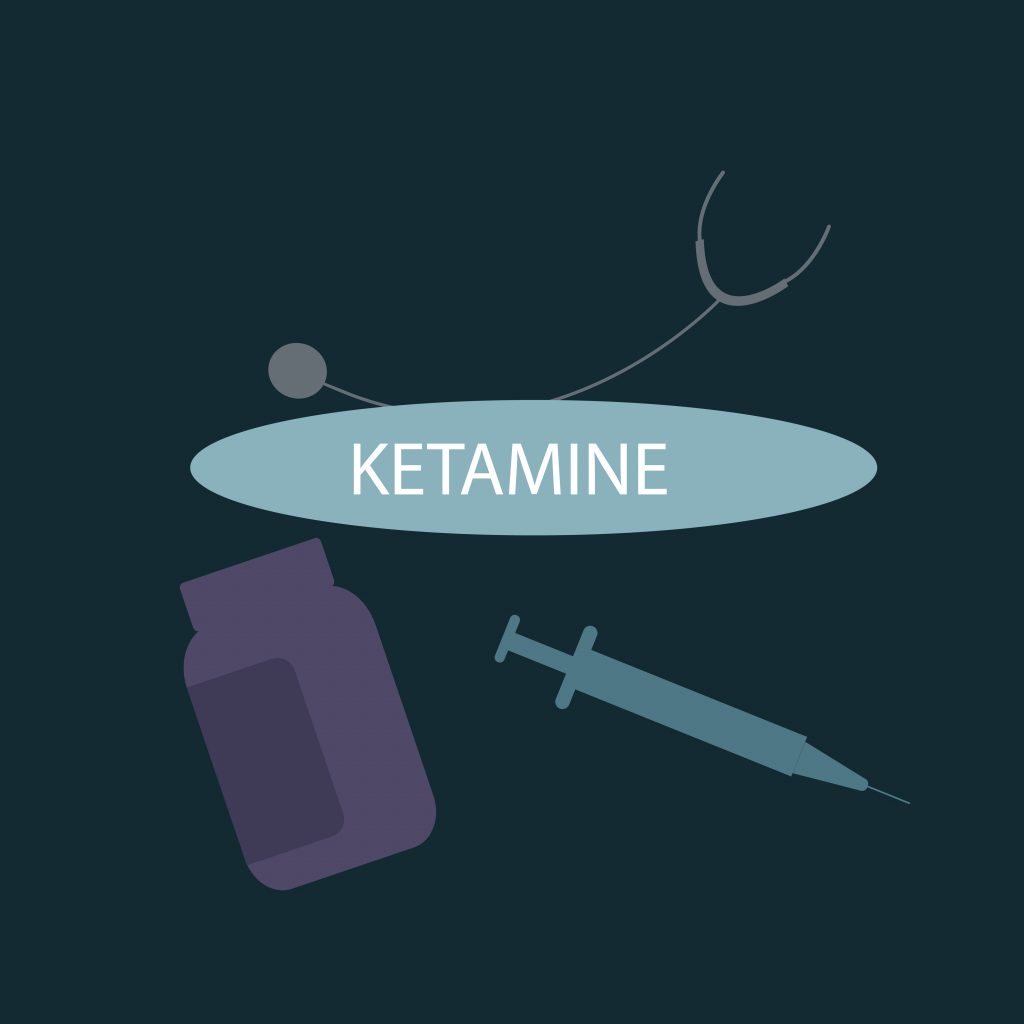Despite having black market roots, over the last few years we have seen a noticeable rise in mainstream uses for ketamine, both recreational and therapeutic. This has become particularly evident in recent months, and maybe I’m a bit biased because of the industry that I’m in… but it seems like everyone is talking about ‘Special K’ lately.
When people discuss ketamine, it’s usually in a general sense: what it is, how it feels, whether it’s legal or not, and where to get it. While these are all very important questions, a key factor that is often missing from the conversation is the various possible methods of administering the drug, and what differences they make in terms of effects, benefits, and bioavailability. Let’s take a more in-depth look at ketamine treatments.
What is Ketamine?
Although it’s often categorized the same as many of our favorite psychedelic drugs, Ketamine (chemical formula: C13H16ClNO) is technically a dissociative anesthetic that can cause hallucinations at high doses. Ketamine was founded by Parke-David Pharmaceutical Company in 1962, and approved by the FDA in 1970 for use as an anesthetic.
It has long been one of the most widely used anesthetics in veterinary medicine for years. Fast forward a few decades, and in 2019, a close relative of ketamine, known as esketamine, was approved by the FDA for use in treating two different forms of depression.
Ketamine and Esketamine
Now this is where things get a bit confusing for people. Although ketamine and esketamine are nearly identical, only esketamine carries FDA approval. That means esketamine is the only one that can be used to treat mental disorders at the moment – ketamine cannot. However, a loophole that allows people access to regular ketamine treatments does exist, should the person have enough money to be able to cover it.
The loophole in question, is the ability of any doctor to prescribe drugs for off-label use, meaning they can prescribe any drug to be used for something it was not originally intended or studied for. This is actually quite common. For instance, my grandmother used to take a medication for her restless leg syndrome that, in reality, was approved for treating Parkinson’s disease. Many modern cosmetic applications for Botox, such as the eyebrow lift and ‘lip flip’, are also off-label uses.

As far as ketamine goes, the differentiation between ketamine and esketamine has led to two entirely separate markets – one pharmaceutical and one more therapeutic and wellness-oriented. This has also resulted in many different ways that ketamine can be administered. Esketamine is a nasal spray, whereas ketamine can be found in liquid form (administered through an IV drip), as a nasal spray, as pills or capsules, or, if we’re talking the recreational/street version of ketamine, it’s typically a white powder that can be snorted.
Ketamine High
A Ketamine high can be described as a floating, euphoric feeling. Dissociation felt in the brain can make it seem like you’re in a video that’s being filmed in third person. Some describe having out-of-body experiences, while others note just mild feelings of elation. Honestly, it depends a lot on the dose and your tolerance, you could have a barely-there high or dive straight into a k-hole… your mileage may vary.
My Experiance
It’s been many years since I tried ketamine, but for me, since I didn’t take much, it was relatively mild but very pleasant. Once it kicked in, everything slowed down. Sounds were a bit distorted but in a good way, and music was enhanced. I remember sitting in the back of my friend’s car while we were parked at the beach. I was leaning against the speaker on the passenger-side door while the song ‘Time’ by Pink Floyd was playing, and I could feel the vibrations from the music entering my ear and slowly traveling through the rest of my body and down to my toes. Everything felt relaxed, there was good energy around, and it was overall a really great experience.
Drug bioavailability explained
Bioavailability refers to the amount of medication or compounds that your brain and body are utilizing, in relation to how much you actually consumed. How much you get and how fast your body is able to feel the effects depends largely on the method of consumption/administration.
Thanks for joining us. Subscribe to the Cannadelics Weekly Newsletter to keep up-to-date; and for access to tons of deals on cannabis flowers, vapes, edibles, smoking paraphernalia, cannabinoid compounds (like delta-8), and so much more. Pick your products, and get baked responsibly.
For example, when you take a medication orally, it goes through your digestive system. Once inside your body, the active ingredients get broken down by stomach acids and turned into a more usable form. Then they pass through the liver for extra filtration before entering the bloodstream. Intranasal medications are somewhat similar. Although technically, nasal delivery bypasses the hepatic first-pass effect so intranasal medications are absorbed faster by the body, the enzymatic barrier of the nasal mucosa creates a pseudo-first-pass effect.
To make a quick, albeit incredibly vague, comparison with standard pharmaceutical drugs, bioavailability is lowest for oral administration at roughly 30-80%, followed by intranasal which is slightly better with 40-90% bioavailability. The only way to get 100% bioavailability from a substance is via intravenous administration. When it comes to Ketamine bioavailability specifically, here are the most recent estimates – Intravenous: 100%, Intramuscular: 85-95%, Intranasal: 25-55%, Sublingual (under the tongue): 20-40% Orally (by mouth): 15-25%. Despite being much lower than the numbers given for some standard medications, you can see that ketamine bioavailability follows the same pattern.
Intravenous
The most popular, most well-known, and most effective option for ketamine treatment is via IV therapy. Using a needle or catheter, ketamine that is often combined with lidocaine and/or magnesium is delivered straight into the bloodstream. The effects are pretty much immediate. In addition to onset and potency, another benefit to using IV ketamine infusions is that the dosage can be more accurately accounted for and administered with better precision during the course of the therapy, which can last anywhere from 1 to 4 hours.
At higher doses that are used for anesthetic purposes, patients will typically have little to no memory of what happened during their treatment; which is the intended effect when ketamine is used for invasive procedures. When used therapeutically for treating mental illnesses, however, the goal is for patients to retain a certain level of subjective consciousness and recollection. In this state they would feel the sedative, euphoric, and sometimes psychedelic effects, but would be able to communicate and remember the experience.

While this option is the most effective, it’s also the most expensive, averaging around $800-1200 USD per session – and patients usually need a series of sessions. Again, you can anticipate spending up to a few hours in therapy. During this time, a nurse practitioner will administer the infusion and monitor the patient to make sure they get the correct dose. Patients are not allowed to drive afterwards, so they will need to arrange transportation with someone who is willing and able to go into the infusion center and sign off on a release form stating they are the designated driver. Often, psychotherapy sessions can be scheduled immediately after the infusions as part of the treatment package.
Intramuscular
IM ketamine therapy is often advertised as being no different than IV administration, but that is inaccurate. Intramuscular administration consists of one single dose of ketamine given with a needle in an arm or leg muscle. Unlike IV drips, IM injections are not titrated and do not allow for dosage control or continued monitoring. One and done dosing.
As stated above, the bioavailability of intramuscular injections is relatively high but not 100 percent like IV route. Intramuscular treatments are also shorter, lasting approximately 30-45 minutes. One benefit to choosing IM treatments is that they are more affordable, costing around 30-40% less than IV therapy on average. Because of this, some medical providers offer both IV and IM treatment options.
Nasal Sprays
Ketamine nasal sprays are nothing new, and intranasal ketamine is the only type to receive FDA approval with the drug Spravato, a nasal spray that utilizes esketamine. The drug is produced by Janssen Pharmaceuticals, a Johnson & Johnson subsidiary company. Despite having FDA approval, ketamine nasal products are known to have some of the lowest absorption rates, and the level of bioavailability fluctuates substantially.
Ketamine (or esketamine) nasal sprays are only available with a doctors’ prescription and only to deal with symptoms of ‘treatment-resistant depression’ and Major Depressive Disorder. Although PTSD, chronic pain, and suicidal ideation could be successfully treated with ketamine, the FDA has not approved the drug for these purposes yet.
If prescribed, at least of portion of Spravato will be covered by medical insurance. However, in terms of raw cost, Spravao is the most expensive ketamine treatment option. Not all insurance plans cover Spravato, and those that do usually do not cover it in full, so make sure you know how much you will be expected to pay beforehand.
Tablets
Another treatment option that’s becoming increasingly available is ketamine tablets. These pills are provided in off-label ketamine treatment centers as well as through online services that send them directly to people’s homes. This option often gets a bad rap, but there are some benefits to using the tablets.
The obvious downside is the low bioavailability of orally administered ketamine. That aside, what is nice about this option is that you get to do it from home with a bit more freedom and less monitoring than other choices on the list. While this won’t work for everyone (in some scenarios, a medical professional absolutely needs to be readily available for safety and liability reasons), it’s preferable for others.

Most companies that ship ketamine pills also allow customers to utilize virtual medical help options. For example, some services allow you to video chat with a doctor or nurse practitioner during your session, to make sure things go smoothly and any questions you have get answered promptly.
Which of the above ketamine treatments is best for you?
Choosing your preferred method of receiving ketamine therapy will hinge entirely on what you’re expecting to get out of the experience. Factors to consider include cost, effectiveness, what condition is requiring treatment (mental health disorder, chronic pain, etc.), and so on.
IV therapy is by far the safest and most effective approach in using ketamine to treat depression. You are in a comfortable setting with healthcare providers at your side the entire time, the potential for side effects is low, and you are certain that the dose you receive is the dose that is going to your brain, maximizing any possible benefits.
That said, many people have had success with other methods as well. Just like with most medical treatments, there is no one-size-fits-all approach. Many companies have you come in to do an IV drip at their office, or they send a team of nurses to your home to do it there. Me personally, I would be more comfortable administering the drug myself, in my home, without someone supervising me the entire time.
Liken it to home birth versus hospital birth. Some women prefer to give birth in a labor and delivery department, while other women prefer to do it a home with nothing more than a midwife and their loved ones for support. Sometimes, it’s a matter of preference and comfortability, which can certainly have an impact on the effectiveness of medical treatments. Your best bet is to discuss with a trusted medical professional what treatment option is most suitable for your needs.
Hello readers! Welcome to CBDtesters.co, the premiere web spot for current and thought-provoking independent cannabis and psychedelics-related news reporting. Stop by every day to keep yourself informed on the quickly-moving world of cannabis and psychedelics, and subscribe to The Cannadelics Weekly Newsletter, for daily coverage of industry news.







